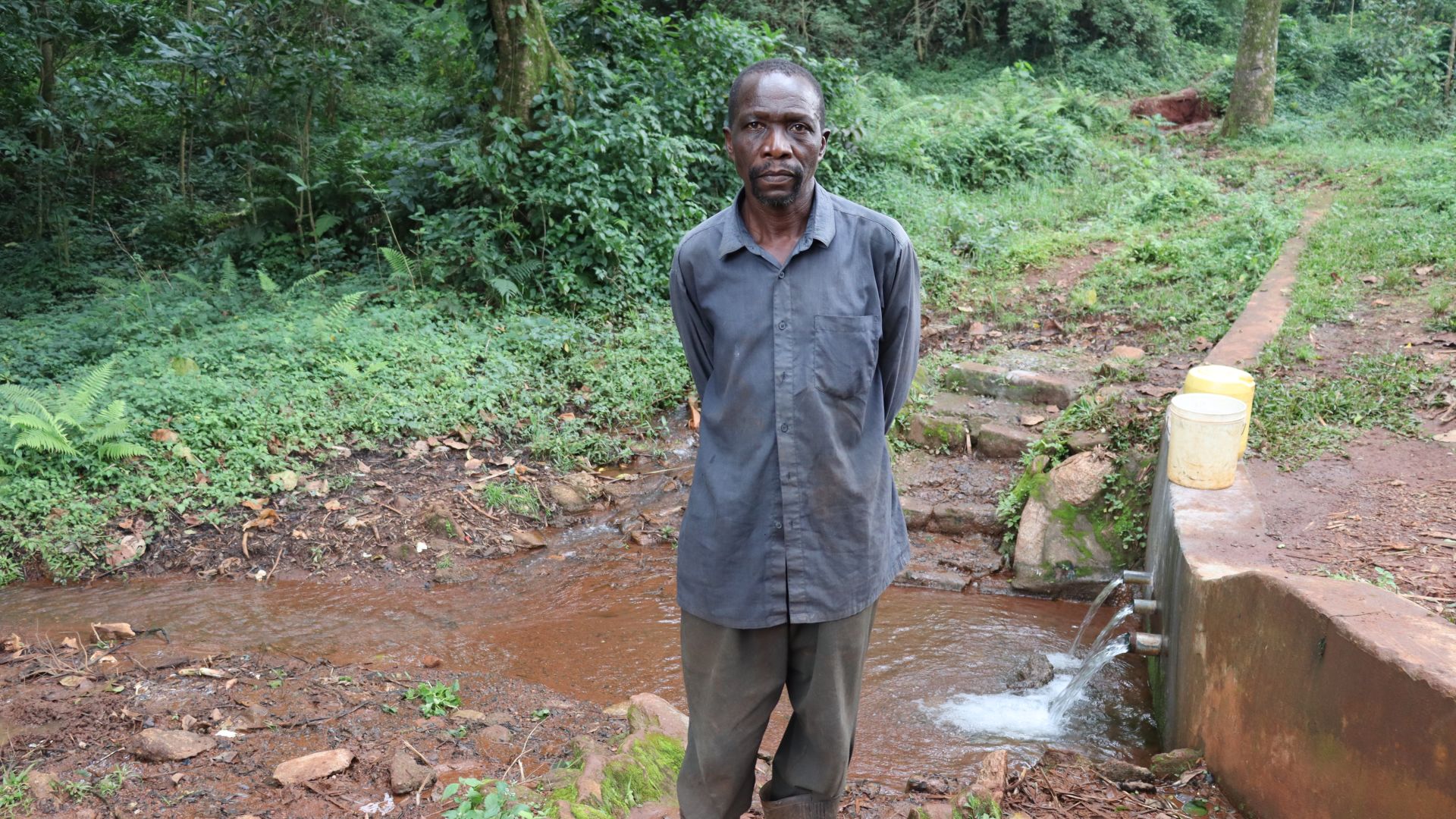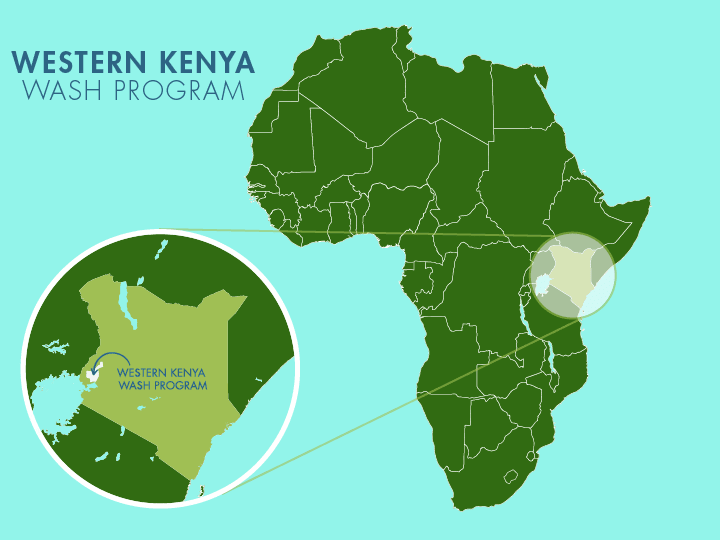In Western Kenya lies the Shitirira Community, home to over 150 people who rely on the Mwalati spring. Though it provides flowing water, the spring is open to contamination, putting families at risk every time they drink from it. The journey there is equally hazardous—muddy, slippery paths make every trip treacherous.

The slippery slope community members travel daily.
Field Officer Carolyne Buradi described the waterpoint as follows: "Access is hard due to the muddy and swampy terrain of the area around and leading to the spring. The spring box is exposed and easily accessible to animals moving around to graze and drink water, making it very easy to get damaged. This poses a serious need for protection."
Her description captures the anxiety residents feel each time they fetch water—a task repeated several times a day.
Farmer Lucheli Mwalati, 60, knows these risks firsthand. He sees the toll it takes on his family.

"As a community, we really value the input our women and children have in ensuring we are able to live comfortable lives through consistent access to clean water. But bearing in mind the kinds of struggles they have to pass through just to access this water, from slippery slopes to muddy terrains, I feel very disturbed. Having to see my children come back home with injuries from falling as they collect water shows a very serious need for improvement in the access [to] this waterpoint," Lucheli lamented.
For Lucheli, farming is not just a livelihood, but a matter of survival. Time spent collecting water is time lost from his fields.

Crops.
"Water is very important to me because without this water, I [would not] be able to put food on my table, since we have to use this water to cook. I also like coming back to a clean home, and for this to happen, cleaning has to be done, and so we use water to clean. I also have a tree nursery that consistently requires irrigation; otherwise, I would lose these small trees to dryness. I cannot really imagine a life without access to water," he shared.
"If I did not have to spend so much of my time fetching water, I would redirect the same energy into taking good care of my farm land. This is where I am able to get food for my family and also make [a] little money from selling produce, and so, dedicating more time to farming would result in a significant improvement in my family's quality of life," he continued.

Lucheli at the spring.
Protecting the spring means protecting Lucheli and his family. When repairing the spring, we will add stairs to increase accessibility and protect it, ensuring the flowing water is free of contaminants.
Lucheli shared what protecting the spring would mean for him: "Having access to a new waterpoint that provides clean and reliable water will significantly contribute [to] ensuring a reduced number of cases [of] waterborne diseases. This is mainly because there would be a reduced risk of contamination by erosion, animals, and animal waste. Also, if access to this water point is improved, I am confident there will be a reduced number of cases involving injuries during the round-trip fetching water."
For families like Lucheli’s, protection of the spring will be life-changing. Together with the community, our team identified a plan to make that possible.
Steps Toward a Solution
Our technical experts worked with the local community to identify the most effective solution to their water crisis. They decided to safeguard the existing flowing spring.
Spring Protection
Springs are natural water sources that originate from deep underground. As water travels through various layers of the earth, it undergoes a natural filtration process, making it cleaner and safer to drink. To protect these spring sources from contamination, we construct a waterproof cement structure around layers of clay, stone, and soil. This design channels the spring water through a discharge pipe, facilitating easier, faster, and cleaner water collection.
Chlorine Dispenser
As an extra measure towards water quality safety, uniquely engineered chlorine dispensers are installed at all of our spring protection projects so community members can treat their water with pre-measured doses of chlorine. The chlorine treats any possible contamination and stays active for two to three days, ensuring water stays safe to use even when stored at home. Chlorine delivery and maintenance of the dispensers are part of our ongoing community support.
Community Education & Ownership
Hygiene and sanitation training are integral to our water projects. Training is tailored to each community's specific needs and includes key topics such as proper water handling, improved hygiene practices, disease transmission prevention, and care of the new water point. Safe water and improved hygiene habits foster a healthier future for everyone in the community. Encouraged and supported by the guidance of our team, a water user committee representative of the community's diverse members assumes responsibility for maintaining the water point, often gathering fees to ensure its upkeep.

 Protected Spring
Protected Spring
 Rehabilitation Project
Rehabilitation Project
















